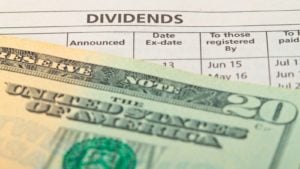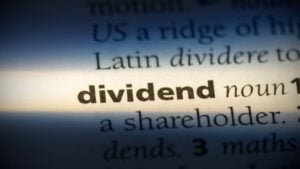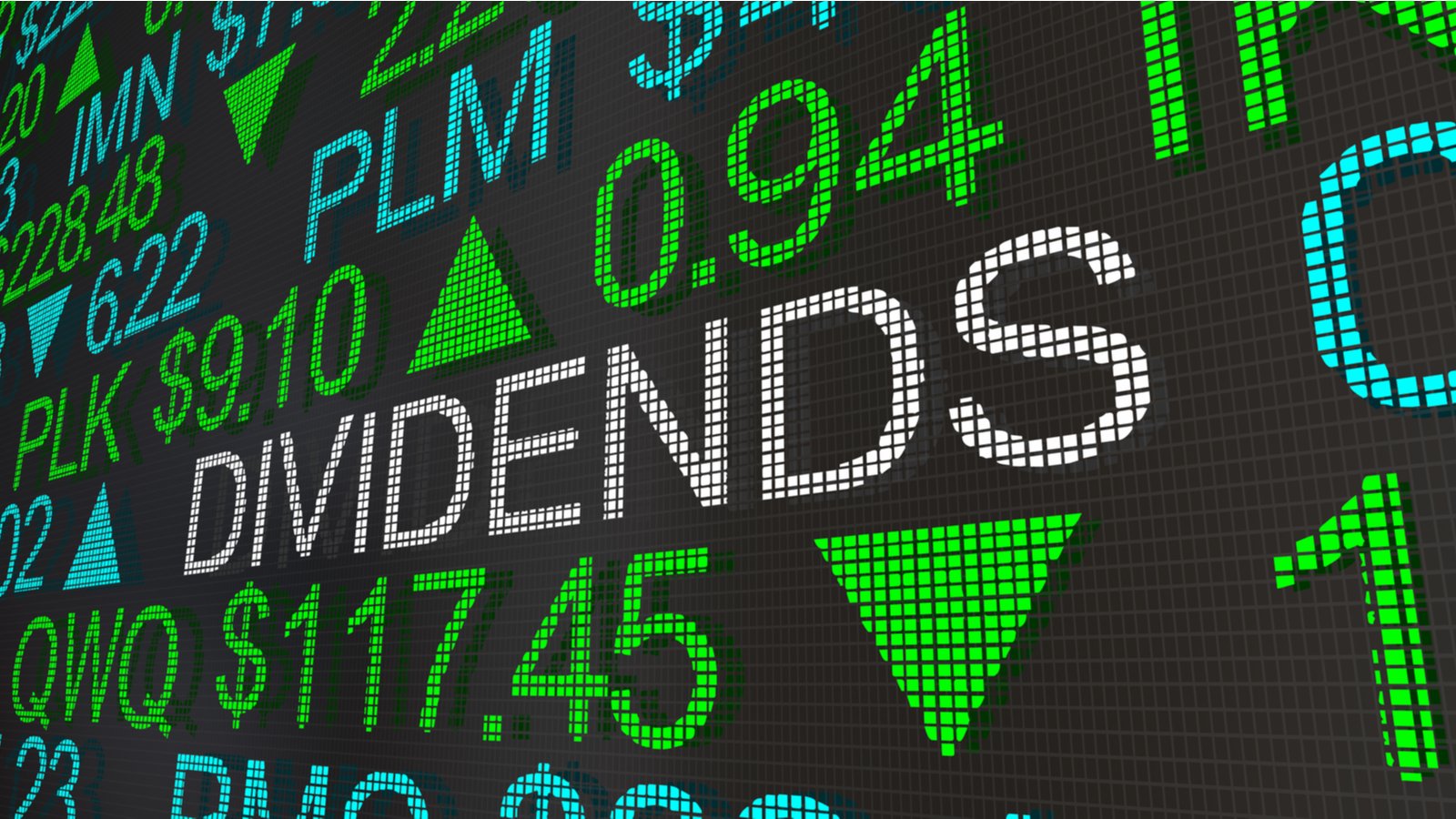As the overall stock market remains choppy, plenty of investors may be considering which dividend stocks to buy for steady, reliable returns. In the near term, stocks offering average- to above-average yields can produce steady gains in a sideways market. In the long term, stocks that pay dividends can produce strong total returns through a combination of price appreciation and payouts.
That said, quality matters when it comes to determining what are the best dividend stocks. Beyond just forward yield, key factors to consider include a stock’s dividend growth track record (how many consecutive years of dividend growth), its dividend growth rate, as well as its payout ratio (dividends as a percentage of earnings).
The seven dividend stocks to buy listed below score strongly in all of these categories. Each one has a solid dividend yield, a sustainable payout ratio, and a multi-year history of dividend growth.
| CAT | Caterpillar | $217.13 |
| FITB | Fifth Third Bancorp | $25.98 |
| JNJ | Johnson & Johnson | $164.05 |
| LHX | L3Harris | $195.42 |
| TSN | Tyson Foods | $62.75 |
| WHR | Whirlpool | $140.55 |
| WSM | Williams-Sonoma | $118.37 |
Caterpillar (CAT)

With 29 years of consecutive dividend growth, Caterpillar (NYSE:CAT) is firmly in the “Dividend Aristocrats” category. The construction and mining equipment maker currently pays out $4.80 per share to investors, giving the stock a forward yield of 2.19%.
Over the past five years, cash dividends for CAT stock have increased by an average of 9% annually. This trend could continue, given both the stock’s low payout ratio (22.64%), along with the company’s continued reporting of strong results. For the last quarter, Caterpillar reported $4.91 in adjusted earnings per share.
This figure represented a nearly 70.5% increase from the prior year’s quarter and came in well above analyst estimates. Sell-side analysts expect CAT’s earnings to come in at $17.40 per share this year, rising to nearly $20 per share by 2025. Steady earnings growth likely means further dividend growth, not to mention continued appreciation.
Fifth Third Bancorp (FITB)

As the banking crisis continues, you may be reluctant to add a bank stock to your portfolio. However, for Fifth Third Bancorp (NASDAQ:FITB), the uncertainty surrounding the sector may work to your advantage.
Like other regional bank stocks, FITB stock tanked when the crisis first took hold in mid-March. This pushed shares to not only a low valuation (7.6 times earnings). The pullback also turned the stock into one of the high-yield dividend stocks. At current prices, shares have a forward yield of 5.04%.
Fifth Third Bancorp has a twelve-year track record of dividend growth, with annual increases averaging 15.78% over the past five years. As Barron’s argued after the stock’s drop, FITB has a strong chance of riding out the current crisis. This, along with the stock’s payout ratio of 36%, points to a sustainable payout with room for additional growth.
Johnson & Johnson (JNJ)

Johnson & Johnson (NYSE:JNJ) is a name that pops up commonly on lists of the best dividend stocks to buy. A blue chip and a “dividend king” (50-plus years of consecutive dividend growth), the fact that it’s a leading name in the resilient healthcare sector further boosts its appeal.
But it’s not merely blue-chip bona fides that make JNJ a buy today. Shares have underperformed year-to-date, as the company keeps contending with billions in talcum power-related legal liabilities. Yet a result of JNJ’s slight slide in price this year, shares today yield nearly 3%.
JNJ stock has a 44.44% payout ratio and has had average annual dividend growth of 6.11% over the past five years and a 44.44% payout ratio. Despite the liabilities, further dividend growth may not be under threat. The planned spinoff of its Kenvue consumer products unit later this year could help unlock value as well.
L3 Harris Technologies (LHX)

Last month, I included L3Harris Technologies (NYSE:LHX) on a list of the best dividend growth stocks because it has a very strong dividend growth track record.
Over the past five years, dividend growth for LHX averaged nearly 15% annually. This may make it a stronger dividend stock among defense names, even as its forward yield (2.34%) trails that of the more popular defense dividend stock, Lockheed Martin (NYSE:LMT), which has a forward yield of 2.58%.
That 15% in annual growth may seem steep and unsustainable, but while its rate of dividend growth will likely decrease, keep in mind that, given a mix of projected high single-digit earnings growth, combined with a relatively low payout ratio, above-average payout growth could continue for some time.
Tyson Foods (TSN)

At first glance, Tyson Foods (NYSE:TSN) may not seem like one of the best dividend stocks to buy. Shares in the meat processor have been hammered in the past year, as high inflation has resulted in softening demand and a big rise in operating costs.
Yet while the company’s fiscal performance is taking a hit in the near term, that doesn’t necessarily mean that TSN stock is not a strong dividend play. There’s little indication that TSN’s current dividend (3.07% forward yield) is under threat, given the stock’s low payout ratio of 27.72%. Not only that, food inflation appears to be in the process of normalizing.
This could help fuel a rebound for the stock. Improving conditions could also mean TSN continues with its more than decade-long trend of dividend growth. Payouts have risen by an average of 12.36% annually for the past five years.
Whirlpool (WHR)

With a forward yield of 5.01%, Whirlpool (NYSE:WHR) has become one of the high-yield dividend stocks, as a result of macro uncertainty. Concerns about the current economic slowdown, and the increasingly likely 2023 recession, continue to weigh on shares in the home appliance maker.
However, it may prove worthwhile to scoop up WHR stock during this stage of the downturn. Not only do shares sport a high dividend, but the stock also trades at a very discounted valuation of around 8.8 times estimated 2023 earnings ($15.96 per share).
When economic conditions improve, Whirlpool is likely to make a big recovery, as the market re-rates the stock. On a longer timeframe, dividends could provide a further boost to total returns with WHR shares. Whirlpool has raised its payout in each of the past twelve years. Dividend growth has averaged 9.73% annually over the past five years.
Williams-Sonoma (WSM)

Williams-Sonoma (NYSE:WSM) is yet another cyclical name that you may find questionable to call one of the top dividend stocks to buy. Yet much like the situation with TSN and WHR, current headwinds have arguably already been baked into WSM’s valuation.
WSM stock today trades for just 7.4 times trailing twelve-month earnings. While earnings are expected to decline this year, they could start to pick up again in 2024. In the meantime, the home furnishings retailer’s current rate of payout (2.97% forward yield) is likely sustainable. Williams-Sonoma has a payout ratio of just 18.9%.
This could enable the company to raise its payout again, much as it’s done over the preceding 16 years. Once earnings growth returns, WSM may be in a position to grow the dividend in line with the stock’s average annual dividend growth over the past five years (15.2%).
On the date of publication, Thomas Niel did not hold (either directly or indirectly) any positions in the securities mentioned in this article. The opinions expressed in this article are those of the writer, subject to the InvestorPlace.com Publishing Guidelines.
